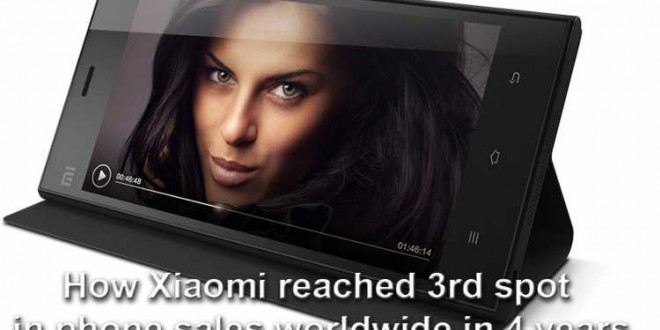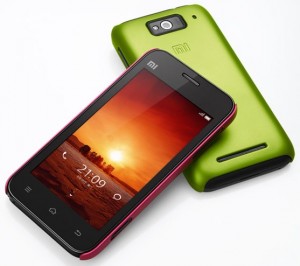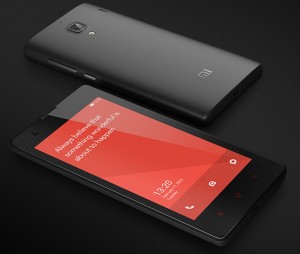- Joined
- Mar 17, 2009
- Messages
- 5,383
- Points
- 63
Xiaomi, Not Apple, Is Changing the Smartphone Industry

by Juan Pablo Vazquez Sampere | 9:00 AM October 14, 2014
Determining which customer to target first is one of the most critical decisions in the entrepreneurial process. Customers that are relatively less risky and more predictable can make it easier for new to firms gain a market foothold. One such set of customers is the nascent middle class in emerging economies.
Why? First, as their financial situation improves they are anxious to buy new things. Not quite able to afford the top brands, they’re nevertheless willing to pay a little more for something they perceive might be close. Second, because they can’t yet afford the high-margin top brands, they’re not all that attractive to incumbents worried about generating enough cash to cover their high fixed and variable costs. So they exist in a sweet spot from an entrepreneur’s point of view: rich and numerous enough to fuel a start-up’s growth and also poor enough not to spur incumbents to respond.
Xiaomi, the four-year-old Chinese smartphone manufacturer, has found just such a sweet spot, and as a result is taking the smartphone industry by a storm. Pundits claim that Xiaomi is just a Chinese copycat of Apple, and not without some reason. Some point to Xiaomi’s product introductions, which are eerily just like Apple’s. Others point out the strong similarities between Xiaomi’s operating system (named MIUI) and Apple’s iOS. What’s more, Xiaomi’s products rank among the best in the industry in terms of performance. All these cues might lead us to believe that it is competing head to head with the leading smartphone manufacturers.
However, looking at the full extent of Xiaomi’s business model reveals just how different – and how disruptive — it is. For starters, unlike Apple, Xiaomi is not targeting premium customers; it’s mostly teens buying those high-quality phones, and hardly at a premium, since Xiaomi’s prices are at least 60% lower. A neat trick. How does Xiaomi pull that off?
To sell high-quality cell phones at so low a price, Xiaomi keeps each model on the market far longer than Apple does. On average, a new version of a phone is launched every 265 days in the industry – down from 345 days in 2009. But Xiaomi doesn’t renew its product for two years. Then, rather than charge high prices to cover the high cost of state-of-the-art components, Xiaomi prices the phone just a little higher than the total cost of all its components. As component costs drop over the two-year period by more than 90%, Xiaomi maintains its original price, and pockets the difference. So essentially its profit formula is the opposite of Apple’s, which collects its highest profits with the introduction of each model and needs to come up with new model after new model to keep those margins up.
When you consider how much easier it might be to profit from plummeting component prices than from continual new feature development (which sooner or later will likely overshoot the needs of most cell phone customers in any event), the disruptive potential of the model becomes clear.
One might worry that other low-end competitors could easily copy this clever model, and to forestall that, Xiaomi has devised a creative way to create some of the mystique Apple is so justly noted for. Essentially it markets its phones to its price-constrained but status-conscious teen base in much the same way that rock band promoters sell concert tickets. Through an online retailer called Flipkart, potential buyers preregister for a short sales window. They’re required to stay online for at least two hours before the sale starts, and then only the first 20,000 lucky buyers get the opportunity to purchase. Human nature being what it is, after this awful experience, buyers end up wanting the phone even more.
Xiaomi is close to meeting its target of selling 60 million phones in 2014 with a business model well suited to expansion into other developing economies. In a classical reaction to disruptive innovation, the largest smartphone manufacturers were at first not motivated to seriously challenge Xiaomi, since they could not be profitable at the price these customers are able to pay. Now that Xiaomi is becoming a significant competitor, the incumbents are still barely reacting, launching simplified versions of their mature flagship products, as Apple did with the iPhone 5c. But these areperceived as outdated, as newer models, like the iPhone 6, are introduced amid great fanfare in wealthier markets, and often end up being discontinued.
So far from being a copycat, Xiaomi presents a knotty disruptive challenge to the largest smartphone manufacturers. As it continues to expand in developing economies by marketing to the emerging middle class, it remains sheltered from the competition by its margins and the way it makes products profitable. Sooner rather than later, as it continues to propagate its new business model, this disruptive competitor is going to change how this industry works.

by Juan Pablo Vazquez Sampere | 9:00 AM October 14, 2014
Determining which customer to target first is one of the most critical decisions in the entrepreneurial process. Customers that are relatively less risky and more predictable can make it easier for new to firms gain a market foothold. One such set of customers is the nascent middle class in emerging economies.
Why? First, as their financial situation improves they are anxious to buy new things. Not quite able to afford the top brands, they’re nevertheless willing to pay a little more for something they perceive might be close. Second, because they can’t yet afford the high-margin top brands, they’re not all that attractive to incumbents worried about generating enough cash to cover their high fixed and variable costs. So they exist in a sweet spot from an entrepreneur’s point of view: rich and numerous enough to fuel a start-up’s growth and also poor enough not to spur incumbents to respond.
Xiaomi, the four-year-old Chinese smartphone manufacturer, has found just such a sweet spot, and as a result is taking the smartphone industry by a storm. Pundits claim that Xiaomi is just a Chinese copycat of Apple, and not without some reason. Some point to Xiaomi’s product introductions, which are eerily just like Apple’s. Others point out the strong similarities between Xiaomi’s operating system (named MIUI) and Apple’s iOS. What’s more, Xiaomi’s products rank among the best in the industry in terms of performance. All these cues might lead us to believe that it is competing head to head with the leading smartphone manufacturers.
However, looking at the full extent of Xiaomi’s business model reveals just how different – and how disruptive — it is. For starters, unlike Apple, Xiaomi is not targeting premium customers; it’s mostly teens buying those high-quality phones, and hardly at a premium, since Xiaomi’s prices are at least 60% lower. A neat trick. How does Xiaomi pull that off?
To sell high-quality cell phones at so low a price, Xiaomi keeps each model on the market far longer than Apple does. On average, a new version of a phone is launched every 265 days in the industry – down from 345 days in 2009. But Xiaomi doesn’t renew its product for two years. Then, rather than charge high prices to cover the high cost of state-of-the-art components, Xiaomi prices the phone just a little higher than the total cost of all its components. As component costs drop over the two-year period by more than 90%, Xiaomi maintains its original price, and pockets the difference. So essentially its profit formula is the opposite of Apple’s, which collects its highest profits with the introduction of each model and needs to come up with new model after new model to keep those margins up.
When you consider how much easier it might be to profit from plummeting component prices than from continual new feature development (which sooner or later will likely overshoot the needs of most cell phone customers in any event), the disruptive potential of the model becomes clear.
One might worry that other low-end competitors could easily copy this clever model, and to forestall that, Xiaomi has devised a creative way to create some of the mystique Apple is so justly noted for. Essentially it markets its phones to its price-constrained but status-conscious teen base in much the same way that rock band promoters sell concert tickets. Through an online retailer called Flipkart, potential buyers preregister for a short sales window. They’re required to stay online for at least two hours before the sale starts, and then only the first 20,000 lucky buyers get the opportunity to purchase. Human nature being what it is, after this awful experience, buyers end up wanting the phone even more.
Xiaomi is close to meeting its target of selling 60 million phones in 2014 with a business model well suited to expansion into other developing economies. In a classical reaction to disruptive innovation, the largest smartphone manufacturers were at first not motivated to seriously challenge Xiaomi, since they could not be profitable at the price these customers are able to pay. Now that Xiaomi is becoming a significant competitor, the incumbents are still barely reacting, launching simplified versions of their mature flagship products, as Apple did with the iPhone 5c. But these areperceived as outdated, as newer models, like the iPhone 6, are introduced amid great fanfare in wealthier markets, and often end up being discontinued.
So far from being a copycat, Xiaomi presents a knotty disruptive challenge to the largest smartphone manufacturers. As it continues to expand in developing economies by marketing to the emerging middle class, it remains sheltered from the competition by its margins and the way it makes products profitable. Sooner rather than later, as it continues to propagate its new business model, this disruptive competitor is going to change how this industry works.








